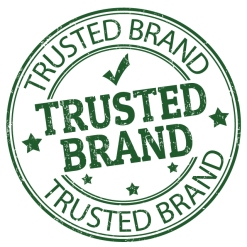When I was at Hewlett-Packard in the late 80s there was an interesting tension between two conflicting aspects of the company:
- It’s pride in developing bench to bench, as in engineers making products for folks just like them (where’s the marketers?)
- The self-deprecating characterization of marketing, best typified in the now famous quip “that if HP were marketing sushi, they’d call it cold, dead fish”, a reference to its marketing via objective, conservative benchmarks and specifications.
Which leads me to my question: Effective Marketing: What’s sushi got to do with it? As a lover of both sushi and marketing I think there some interesting observations to be made.
History:
Sushi has been around a very long time, starting in 4th century BC in Asia as a method to preserve fish, an important source of protein. Salted fish was kept in rice, stored for months, allowing the rice to ferment the fish. With this type of sushi, called nare-zushi, the fish was later consumed but the rice was thrown away.
Early in the 8th century, after having spread throughout China, the Japanese began to adopt their own form of sushi in which both the fish and the rice were consumed. The fish was allowed less time to ferment with the rice and was therefore still partially raw. Seisei-zushi represented a fundamental shift from food preservation to cuisine.
Later in the 19th century mobile food stalls began selling sushi in Tokyo Bay, combining fresh fish and select seaweed and calling it nigiri-zushi. As a result of the Great Kanto earthquake of 1923 there was enormous dislocation in the Tokyo area, which couldn’t sustain the city’s concentration of sushi chefs. They spread out across Japan, helping to spread the new variety of sushi, which later gained popularity in the United States in the early 80s not only for taste considerations but as a healthy dining alternative.
As for the history of marketing, it has a shorter timeline. Some attribute Gutenberg’s invention of metal, movable type in 1450 as the beginning of marketing as that technology eventually led to the first “mass” production of flyers, notices and brochures. Magazines followed in the early 1700s, paid advertising in newspapers in the early 1800s, and spam (via the telegraph), billboards and brand trademarks followed shortly thereafter.
Methods, materials, primary purpose, location have all evolved for both sushi and marketing and having a sense of the history helps provide perspective on current trends and future directions. And that despite great change, there’s continuity.
Specialized Skills:
In Japan it can take 15 years of apprenticeship before you are viewed as “ready” to be out on your own. Pre-dawn selection of fish from the fish market, preparation of the special vinegar rice, cleaning and cutting the fish, perfecting making the rice ball and maki rolls, all require specialized skills, attention to detail, and great patience.
Having tried to making sushi at home I have had the dispiriting experience of my rice balls falling apart and the cut fish looking like a ham steak instead of an elegant piece of sushi. I imagine that many people don’t want to “try this at home”, happy to trust their sushi experience (and their health) to the experts.
But have you noticed that folks from many functions believe themselves a marketing expert? After all, research suggests we’re bombarded with marketing messages every day (Consumer Reports suggest American consumers are exposed to 247 messages each day. To put that in perspective, each of us sees more ads in one year than people 50 years ago saw in a lifetime). All that exposure makes us experts on some level with regard to a sense of what resonates and what appears to simply not work.
Nevertheless, like being a sushi chef, great marketing requires specialized skills. Whether it’s customer and market research methodology, creative design and branding, strategy development, communications expertise…all combine to establish the art and science of cost-effective marketing programs that have impact.
Great sushi looks good, is free from parasites, and tastes great.
Great marketing moves markets, creates new categories, defines new business and product strategies that offer unique customer value, creates product intros that generate profitable sales, etc.
Beauty: An End In Itself?:
Clearly the Japanese aesthetic is part of sushi’s attraction. Glazed sushi plates, chopstick rests, soy sauce dishes, placement of the sushi on the plate, attractiveness of each piece, plate decorations (seaweed dividers, wasabi and ginger arrangements, etc.) all contribute to an attractive appearance.
But if the fish isn’t fresh and the maki doesn’t taste good, well all that beauty doesn’t add up to anything.
Similarly, artistry and creativity are certainly a part of great advertising, website and collateral design, and even brand naming. There are a number of industry awards that recognize such creativity, innovation and artistry…but does the marketing work?
The products of marketing may be aesthetically beautiful (even art) but a few of the true tests of marketing lie in:
- Are the messages and visuals credible and relevent to the audience?
- Are your products, services and related communications different, so that they get noticed, provide unique value to the customer, and establish unique space vs. the competition
- Does the marketing advance your company and brand image (awareness and preference)?
- Does it move your audience to purchase consideration?
These are just a few of the litmus tests that can be applied to really good marketing. Like sushi, great marketing must satisfy more than your visual appetite!
Timing Can Be Everything:
Did you know that the least popular days to go to a sushi restaurant are Monday and Thursday? Fresh fish is at the heart of good tasting sushi. In Japan fish markets are often closed on Sundays, which is why many sushi restaurants are closed on Mondays. Many sushi restaurants buy their fish on Tuesdays (for the mid-week) and Fridays (for the weekend). The best nights to get fresh fish are Tuesday and Friday night (very busy sushi restaurants may also buy fresh fish on Saturday as well). Monday and Thursday, if the sushi restaurant is open on those days, may not provide the freshest sushi.
Timing is critical in strategic marketing and communications as well. The right campaign at the wrong time could yield negligible results. Some critical timing factors to think about:
- Product development, particularly in regulated industries like medical products, invariably takes longer than anticipated. Having been around that block a number of times, what contingencies do you have in place if your product functionality, portfolio completeness and timing shifts?
- Are your messages linked effectively to the buying cycle? If you don’t get invited to be part of the RFQ/RFP, spending a lot of resources on communicating about your differences vs. the competition may be a waste. Gaining awareness, being considered in the purchase process, growing your positives with the installed base, each require linking critical messages to your audience at the right time in the customer lifecyle.
- Have a disruptive innovation? Many times enthusiasm for the attributes of the innovation cause marketers to communicate too close to the product instead of conditioning (educating) the market about the new category and then linking it to their company. A great example of this now is the UPS logistics campaign, a fabulous example of category creation (we’re not in shipping, we’re in logistics) so that customers understand the new benefits and that those benefits are uniquely provided to UPS (which provides a far more detailed description of benefit than the prior campaign, “What can brown do for you?”…I don’t know, deliver my box?).
These are just a few examples of critical timing considerations for effective marketing.
Timing can be critical, whether you’re crafting a sushi roll or marketing message. Ignore timing at your dining and business peril!
Convention and Protocol:
The first time I traveled to Japan I was excited to go to my first authentic Japanese meal. I was honored by one of the business leaders to be taken to a nearby sushi restaurant. With his help I ordered a few items. We got caught up in conversation as the food arrived and I hungrily dug in…with my fingers. I hadn’t yet mastered the art of chopsticks so I simply grasped a piece of sushi between finger and thumb, dipped it in the soy sauce, and popped it into my mouth.
When I looked over at my host he was staring at me in horror. In a flush of embarrassment I asked what was wrong and he proceeded to lecture me that I must use chopsticks, turn the sushi over and dip only the fish side into the soy sauce, not to put additional wasabi on the sushi as the chef already put the right amount on when he made it, and not to put wasabi into the soy dish. I begged forgiveness and ate with difficulty and self-consciousness the rest of the meal.
A few decades later I have mastered chopsticks but when in the States I cater to my own sense of taste and propriety and can’t say I’ve noticed any shocked stares from the chef or other patrons. And while I respect the tradition, I’m not sure any of those conventions change the quality of the experience in my mouth.
In marketing, we have a fair bit of convention and protocol as well. It seems automatic in the B2B world that for every new product introduction a brochure, print ad and press release are what’s expected. Besides there being so many more ways to engage your customers, raise awareness, and support sales efforts, fundamental questions should always be asked before jumping to conventional deliverables. These questions center on who your target customer is, what’s important to them, how to build credibility and relevance, what are the barriers in the market to overcome, and what are the best vehicles to achieve your initial and downstream objectives. Maybe your first resources will be spent on visual demonstrations, white papers and industry association engagement. Or perhaps social media, web ads, and email.
In both sushi and marketing, convention can get in the way of meeting your objectives (whether it’s an enjoyable meal or an effective campaign).
Finally…
Chop sticks, convention, cold, dead, raw fish…to the novice, sushi can be a little intimidating. Perhaps you’ve heard of “beginner sushi”, which includes a California Roll (no raw fish in that), cucumber rolls, and if you’re daring, maybe a piece of tuna sushi.
Marketing can be a little daunting too. I recommend starting with the end in mind: What are you trying to achieve and work backwards to what is the strategy and tactics to reach your objectives. And when in doubt, reach out to an experienced marketer to help you navigate the menu of marketing strategies and tactics best for your business.



You must be logged in to post a comment.